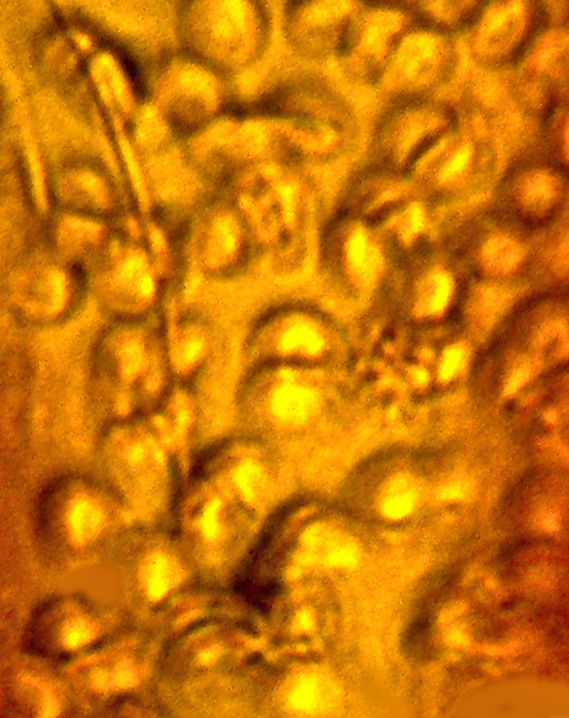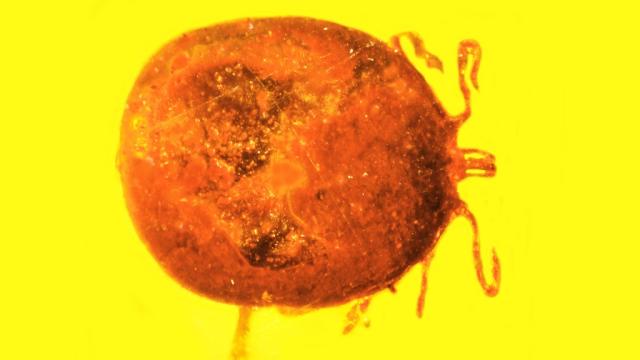A tick sucks some monkey blood. A monkey’s grooming partner picks the tick off. The tick lands in some sap. The whole thing fossilises. Scientists discover the cells inside the tick in the amber. They turn the blood cells into monkey clones, and you essentially have some sort of Jurassic Park in real life.
Image: George Poinar Jr.
That might actually be happening after one well-known scientist’s amber discovery. Except for the cloning and Jurassic Park part.
A scientist at Oregon State University thinks he has found that same tick full of monkey blood — these would be the oldest fossilised mammalian blood cells. The sample also contained the only fossilised examples of a certain parasite that still infects humans and animals today.
The researcher was George Poinar Jr, the entomologist who popularised with the entire idea of extracting DNA from amber that Jurassic Park is based on. He obtained the sample from the Cordillera Septentrional mountain range in the Dominican Republic. He started by polishing the amber so he could see the gorged 2.5mm tick inside, then cracked it open like a wonder ball and viewed it under a microscope, where he found blood cells naturally stained by the chemicals in the amber.
This likely dashed his hopes of turning it into a cool cane, all for the sake of science.

Poinar also found parasites inside the tick called piroplasms, which are still responsible for the tick-borne, blood cell-infecting disease babesiosis today.
Poinar has reason to believe that the tick came from monkeys grooming each other thanks to puncture marks on the tick indicating to him that something had picked it off. The size of the blood cells, and the type of animals that lived in the Dominican Republic at the time also added clues, and he published these results in theJournal of Medical Entomology.
The idea that the cells came from monkeys is mainly speculation, given the fact that there isn’t definitive proof, just lots of connected hints presented in the paper’s discussion section — the part where authors are allowed to speculate.
Poinar sent Gizmodo some thoughts in an email. “[I have] no other hypotheses for the mammal host,” he said. “Too bad I couldn’t find some monkey hair along with the sample.” And as for getting DNA out, he’s not trying… yet. “Oh I wish I could get some DNA out of the specimen, but it would destroy it… so I am not trying at the moment.”
It’s unlikely that the blood cells will be cloned into monkeys to inhabit some sort of Paleogene Park, since, well, amber doesn’t preserve DNA all that well, according to a paper on bees preserved in amber published in the journal PLOS One.
Also, a park full of monkeys would really be a lot less exciting than one full of dinosaurs, I think.
